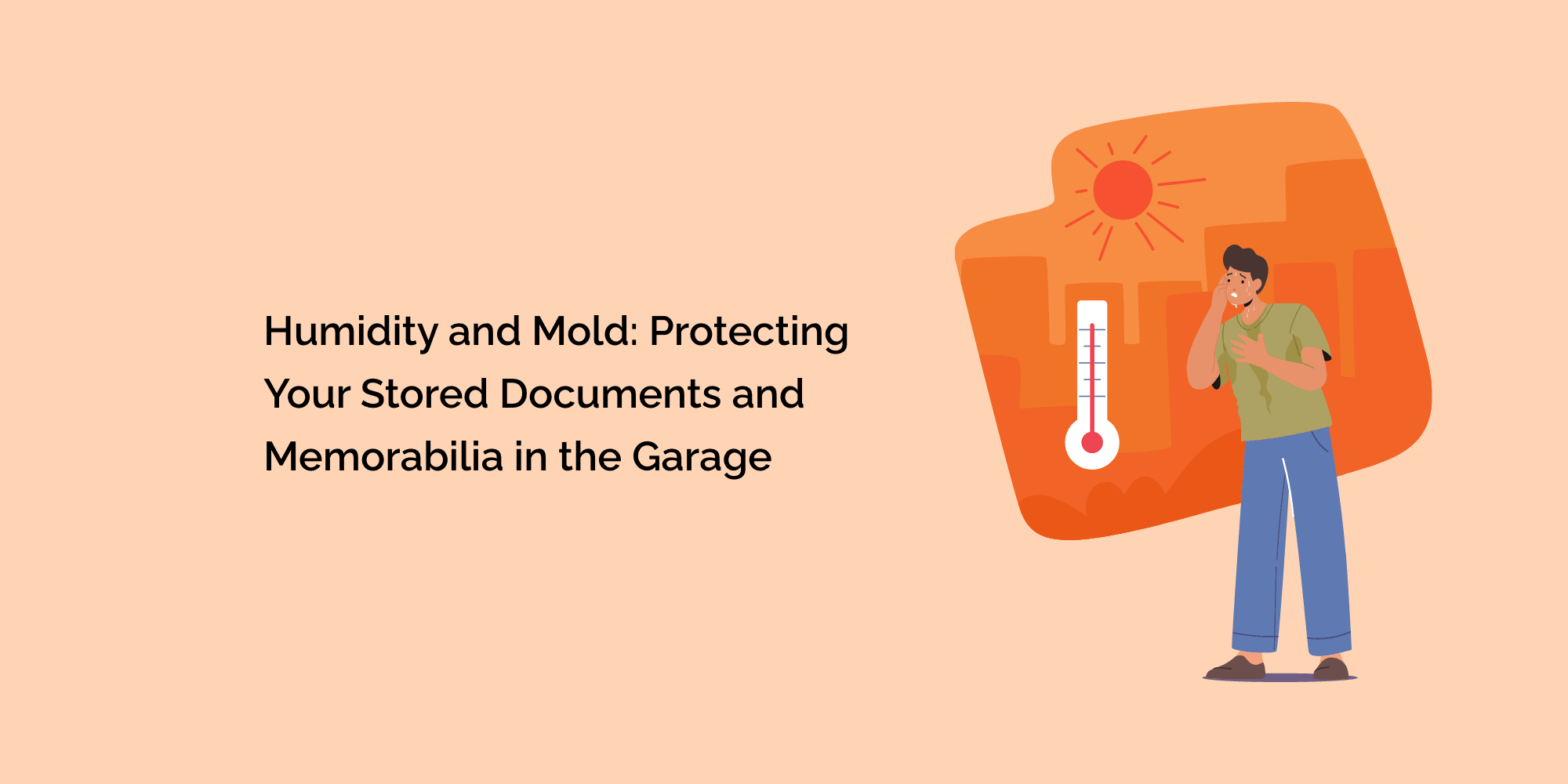Your garage can serve as a convenient storage space for a wide range of items, from tools and equipment to seasonal decorations and even sentimental documents and memorabilia.
While the garage provides ample storage, it also presents unique challenges, particularly when it comes to humidity and mold growth.
This blog will guide you through the importance of safeguarding your stored documents and memorabilia in the garage and provide valuable tips to protect these precious items from the damaging effects of humidity and mold.
Understanding the Threat of Humidity and Mold
Humidity and mold can wreak havoc on your stored documents and memorabilia. Here's why:
-
Humidity: High humidity levels can create a damp environment in your garage, which is ideal for mold growth. Mold thrives in moist conditions, and excessive humidity can encourage it to develop on paper, cardboard, and other porous materials.
-
Temperature Fluctuations: Garages often experience temperature fluctuations, leading to condensation. This condensation can form on surfaces, providing the moisture necessary for mold to take hold.
-
Limited Ventilation: Poor ventilation in garages can trap moisture and create stagnant air, further exacerbating the risk of mold growth.
Tips to Protect Your Documents and Memorabilia
-
Proper Storage Containers: Invest in high-quality plastic storage containers with tight-fitting lids. These containers provide a barrier against moisture and dust, safeguarding your items from mold growth and other environmental hazards.
-
Elevate Off the Floor: Store your containers on shelving units or pallets to keep them off the garage floor. This prevents moisture absorption from the ground and minimizes the risk of mold spreading upward.
-
Seal Documents in Plastic: For extra protection, seal important documents, photographs, and memorabilia in plastic sleeves or Ziploc bags before placing them in storage containers. This adds an additional layer of defense against humidity and moisture.
-
Desiccant Packets: Place desiccant packets (silica gel or activated charcoal) inside your storage containers. These help absorb excess moisture, reducing the risk of mold growth.
-
HEPA Air Purifier: Consider using a HEPA air purifier in your garage to filter out airborne mold spores and other contaminants. This will help maintain a cleaner, healthier environment.
-
Climate Control: If possible, install climate control systems in your garage to maintain consistent temperature and humidity levels. Dehumidifiers and heaters can be valuable tools for this purpose.
-
Regular Inspection: Periodically inspect your stored items for any signs of moisture, mold, or damage. Early detection can prevent extensive damage.
-
Organize and Label: Keep an inventory of the items in your garage and label containers clearly. This will help you quickly locate specific documents or memorabilia without having to dig through everything.
-
Maintain Garage Ventilation: Ensure that your garage has adequate ventilation. Open windows and doors when possible to improve airflow, and consider installing exhaust fans.
-
Periodic Cleaning: Regularly clean your garage, sweeping away dust and debris. Dust can serve as a breeding ground for mold spores, so keeping your garage clean is crucial.
Conclusion
Humidity and mold can pose a significant threat to your stored documents and memorabilia in the garage. By implementing the tips mentioned above, you can effectively protect these valuable items from moisture damage, mold growth, and other environmental hazards.
Proper storage containers, climate control, and regular inspection are key to preserving your cherished documents and memorabilia for generations to come. A little proactive effort can go a long way in ensuring these treasured items remain safe and intact in your garage.








